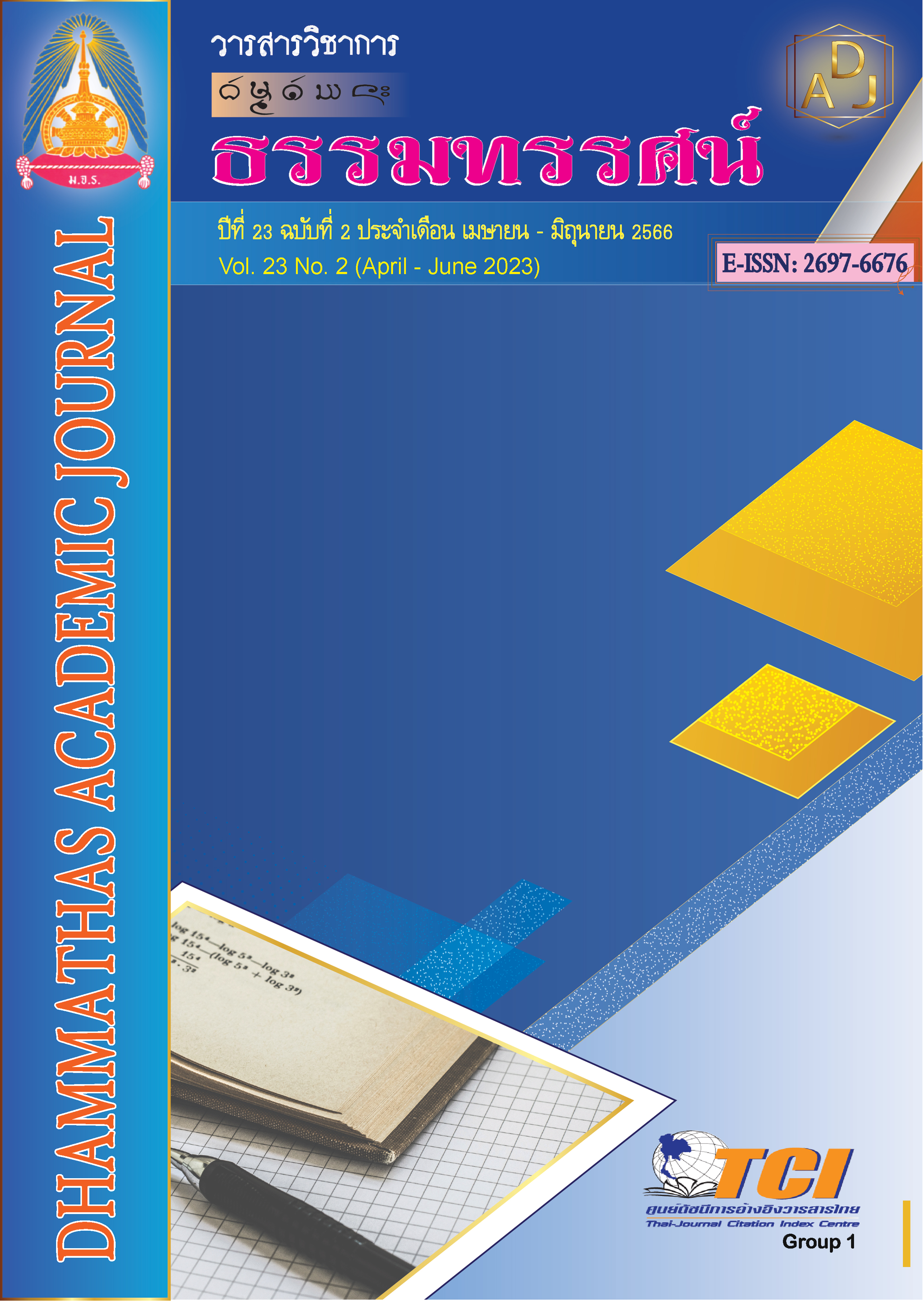The Potential Development of Safety Officers to Conduct in Accordance with Work Environment Regulations on Heat
Main Article Content
Abstract
The objectives of this research were: 1) to study the situation of heat problems of the establishments in Bangkok and metropolitan region; 2) to study the potential of safety officers on heat-related work; and 3) to analyze and propose the approaches for potential development of safety officers in accordance with work environment regulations on heat. The questionnaires and focus group discussion forms were used as research tools. A sample of 144 safety officers at professional level were randomly selected from the enterprises in Bangkok and the metropolitan region, and 12 key informants involved in thermal work safety were purposively selected for an online group discussion. Quantitative data were analyzed using descriptive statistics, and qualitative data were triangulated before analysis, synthesis, and conclusions.
The results of study revealed that:
1. 36.11 % of enterprises had relatively high heat levels with an average Wet-bulb globe temperature (WBGT) 31–33 degrees Celsius, and 38.89 % of enterprises had heat-related health impacts or complaints of employees about 3-4 times per month.
2. The potential of safety officers with a high average score were the legally qualified personnel and heat stress monitors. The issue with a moderate average score was the ability to analyze the working conditions exposed to heat.
3. The approaches to developing potential for legal compliance consisted of 3 factors including legal factor, collaborative factor and management factor. This study suggests that the government agencies should develop legal compliance guidelines, support sustainable management systems and bilateral cooperation between employers and employees, as well as the use of heat control methods under the hierarchy of controls.
Article Details

This work is licensed under a Creative Commons Attribution-NonCommercial-NoDerivatives 4.0 International License.
เพื่อให้เป็นไปตามกฎหมายลิขสิทธิ์ ผู้นิพนธ์ทุกท่านต้องลงลายมือชื่อในแบบฟอร์มใบมอบลิขสิทธิ์บทความ ให้แก่วารสารฯ พร้อมกับบทความต้นฉบับที่ได้แก้ไขครั้งสุดท้าย นอกจากนี้ ผู้นิพนธ์ทุกท่านต้องยืนยันว่าบทความ ต้นฉบับที่ส่งมาตีพิมพ์นั้น ได้ส่งมาตีพิมพ์เฉพาะในวารสาร วิชาการธรรม ทรรศน์ เพียงแห่งเดียวเท่านั้น หากมีการใช้ ภาพหรือตารางของผู้นิพนธ์อื่นที่ปรากฏในสิ่งตีพิมพ์อื่นมาแล้ว ผู้นิพนธ์ต้องขออนุญาตเจ้าของลิขสิทธิ์ก่อน พร้อมทั้ง แสดงหนังสือที่ได้รับการยินยอมต่อบรรณาธิการ ก่อนที่บทความจะได้รับการตีพิมพ์References
กองโรคจากการประกอบอาชีพและสิ่งแวดล้อม. (2562). รายงานสถานการณ์โรคและภัยสุขภาพจากการประกอบอาชีพและสิ่งแวดล้อม. เข้าถึงได้จาก http://envocc.ddc.moph.go.th/uploads/situation2/2561/2561_01_envocc_situation.pdf
ทัศน์พงษ์ ตันติปัญจพร. (2562). ความร้อน: ผลกระทบต่อสุขภาพ การตรวจวัด ค่ามาตรฐานและการปรับตัวให้ทนกับสภาพความร้อน. วารสารความปลอดภัยและสุขภาพ, 12(3), 1-16.
ประมุข โอศิริ. (2562). วิเคราะห์กฎหมายสิ่งแวดล้อมในการทำงานเรื่องความร้อน. วารสารกฎหมายสุขภาพและสาธารณสุข, 5(1), 71-84.
สุดาว เลิศวิสุทธิไพบูลย์. (2563). ปัจจัยแห่งความสำเร็จในปฏิบัติตามกฎหมายเกี่ยวกับมาตรการอนุรักษ์การได้ยิน. วารสารสุโขทัยธรรมาธิราช, 33(1), 34-51.
สุภัทรา นันดี. (2561). การศึกษาปัจจัยเอื้อที่ทำให้เกิดการจ้างงานและการลงทุนพื้นที่อุตสาหกรรมในเทศบาลอ้อมน้อย อำเภอกระทุ่มแบน จังหวัดสมุทรสาคร. การประชุมวิชาการระดับชาติ มหาวิทยาลัยเทคโนโลยีราชมงคลรัตนโกสินทร์ ครั้งที่ 3 การบูรณาการความรู้เพื่อสังคมที่ยั่งยืน, 18-20 กรกฎาคม 2561, (หน้า 41-48). ประจวบคีรีขันธ์: มหาวิทยาลัยเทคโนโลยีราชมงคลรัตนโกสินทร์ วิทยาเขตวังไกลกังวล.
Cardoza, J. E., et al. (2020). Heat-Related Illness Is Associated with Lack of Air Conditioning and Pre-Existing Health Problems in Detroit, Michigan. USA: A Community-Based Participatory Co-Analysis of Survey Data.
Krejcie, R. V. & Morgan, D. W. (1970). Determining Sample Size for Research Activities. Educational and Psychological Measurement, 30(3), 607-610.
Loannou LG., et al. (2021). Occupational Heat Stress: Multi-Country Observations and Interventions. Retrieved from https://www.mdpi.com/1660-4601/18/12/6303
Mooyad, M. A. (2017). The Effectiveness of Hearing Conservation Program in the Workplace. Global Journal of Otolaryngology, 5(4), 117-119.
Morrissey, M. C., et al. (2021). Impact of occupational heat stress on worker productivity and economic cost. American Journal of Industrial Medicine, 64(12), 981-988.
OSHA (Occupational Safety and Health Administration). (2017). OSHA Technical Manual Section III: Chapter 4 - Heat Stress. Retrieved from https://www.osha.gov/otm/section-3-health-hazards/chapter-4
OSHA (Occupational Safety and Health Administration). (2023). Heat Hazard Recognition. Retrieved from https://www.osha.gov/heat-exposure/hazards
Polit, D. F., Beck, C. T. & Owen, S. V. (2007). Is the CVI an Acceptable Indicator of Content Validity? Appraisal and Recommendations. Research in Nursing & Health, 30, 459-467.

